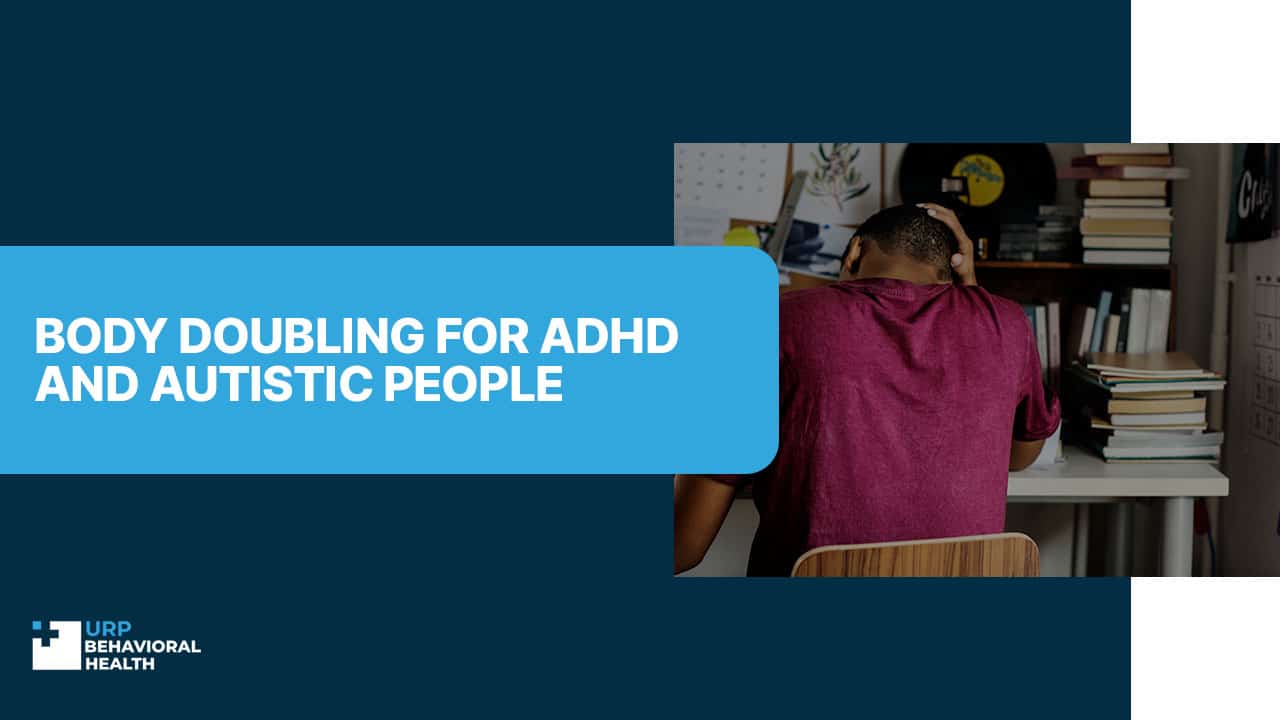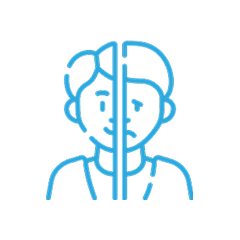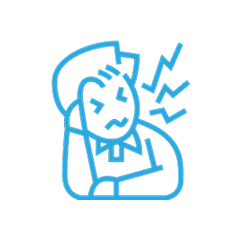
Dissociation and Borderline Personality Disorder (BPD)
With the development of psychiatry and psychology as scientific branches, lots of diagnoses were crystallized describing people whose behavior earlier was considered to be ‘weird’. BPD or borderline personality disorder is among such diagnoses that emerged in the early 1930s. Its symptoms were characteristic of people balancing between neurotic and psychotic states of mind with turbulent mood fluctuations, low control locus, and intensive feelings of abandonment and loneliness. One more symptom of this disorder is the occurrence of dissociative episodes. Let’s highlight how BPD dissociation manifests, which intersections with other mental issues it has, and what are the main treatment methods for patients suffering from severe dissociation issues.
The Main Understanding of BPD and Dissociation
BPD as a separate mental health disorder was primarily highlighted in 1930-1940 by psychiatrists Frieda Fromm-Reichmann and Adolf Stern. Then, in the 1950s, Kurt Schneider first used the term ‘borderline’ to describe the patients whose symptoms didn’t fit exactly either neurosis or psychosis [1]. In the 1980s, BPD was officially recognized as a distinct diagnosis with remarkable following symptoms:
- Feeling of emptiness and apathy
- Tending to self-harm
- Lack of self-control
- Constant and severe mood swings
- Relational destabilization
- Dissociation
The last symptom is also characteristic of several more mental health issues like DID (dissociative identity disorder). PTSD/CPTSD (post-traumatic stress disorder), bipolar disorder, and schizophrenia.
Contact our admissions team now to begin your path toward a brighter future.
What is dissociation itself? It is a mental mechanism by which a person separates from their feelings and experiences, and in some cases, even from their own body. This leads to the feeling that certain events in their life are happening to someone else, and they are only observers.
In its mild manifestation, dissociation can occur in most people occasionally. Probably, everyone experienced at least once daydreaming, zoning out, or feeling caught up by a book or TV series that is missing what’s happening around. These are mild dissociation issues common to the human psyche. Yet, in terms of dissociation with BPD, these symptoms are more severe and intense resulting in depersonalization, derealization, amnesia issues, identity confusion and alteration.
Is BPDa Dissociative Disorder? Scientific Approach to BPD
Scientists claim dissociation is a core symptom of borderline personality disorder with over 80% of diagnosed BPD patients experiencing recurring dissociation episodes related to traumatic experiences [2].
At the same time, you shouldn’t associate BPD with dissociation episodes with DID. In terms of comparison of dissociative identity disorder vs borderline personality disorder, the roots of emerging symptoms differ. In DID, dissociation is a kind of coping mechanism for traumatic experiences while in BPD, it is an accompanying symptom with dominating emotional dysregulation. That is, while DID has dissociation as the primary symptom, BPD patients are not mandatory to experience it. You should understand that BPD and dissociative identity disorder are not the same yet they can be diagnosed in one person simultaneously.
The Main Symptoms of BPD and Dissociation
The core symptoms of borderline personality disorder dissociation episodes are as follows:
- It is the feeling of separation from the body. This symptom results in people feeling they are in a dream and they just look at what happens with their body from the outside.
- This is a feeling of being excluded from the external world. This symptom is often felt like a person is watching everything around them but at the same time, they do not belong to this world, situation, or society.
- Amnesia is also characteristic of dissociation. In terms of BPD dissociation, amnesia typically emerges after anxiety and anger episodes, issues of aggression or self-aggression. The episodes of amnesia can last from a couple of minutes to days and a person cannot remember what they did and what happened to them during this time.
- Identity confusion. This symptom results in the absence of understanding of who a person is. In BPD, it has a specific manifestation. Often, a BPD person cannot understand where their identity ends and the identity of another person begins. That causes relationship difficulties with partners or relatives.
- Identity alteration. That is the situation when a person develops multiple inner alterations of their personality acting differently and behaving like someone else.
All these symptoms manifest in BPD-diagnosed people from time to time with no obligatory constant expression.
We’ll help you understand your options and guide you toward care.
Causes of Borderline Personality Disorder and Dissociation
Typically, scientists relate dissociation with severe traumatic experiences. That is what pushes the manifestation of DID, for example. In BPD, the exact causes of dissociation are still undetermined. Scientists have a hypothesis that child abuse or neglect and early separation from parents or caregivers in childhood can be the main triggers for it like they are for BPD itself. As BPD patients tend to avoid traumatic experiences, they can involve dissociation mechanisms for this.
Besides, physiologic causes are also detected. According to the research [3], scientists detected changes in brain functions and decreased activity in the limbic temporal areas of the brain in patients with BPD dissociative episodes.
Treatment Practices for Dissociation and Borderline Personality Disorder
The treatment for dissociation episodes in BPD patients is typically aimed at reducing the harmful impact of their main symptoms. Psychologists offer such patients to try the methods of dialectical behavioral therapy which are helpful in the reduction of dissociative symptoms. Also, practices of reconnection with the self are implied, for example, grounding exercises involve 5 basic senses to reconnect with reality and the self.
Let’s recap the essence of dissociation and borderline personality disorder, their connection and the main treatment methods.
BPD and dissociation are closely related as dissociation episodes are characteristic of 80% of BPD patients. Yet, dissociation is not an obligatory symptom of borderline personality disorder. Some patients have severe issues of BPD without dissociation episodes while even people with a healthy psyche often experience mild dissociation.
At the same time, dissociation can harm the social interaction and activity of BPD people as it manifests in identity alteration and identity confusion, brings the issues of short-term amnesia, and often makes a person feel unreal and depersonalized. In these cases, BPD therapy should include special techniques and methods targeted to reduce dissociation symptoms.
In URP Behavioral Health, we provide multi-factor diagnostics of BPD with dissociative symptoms and develop individual treatment plans which take into account the severity of dissociation symptoms, possible triggers, and overall patient’s medical history to guarantee the effectiveness of therapy.
Do not be afraid of being diagnosed with BPD. The earlier you start your way to mental health, the faster you experience well-being improvements.
Reach out today and let us create a treatment plan designed around your needs.
Resources:
- https://www.ncbi.nlm.nih.gov/books/NBK430883/
- https://bpded.biomedcentral.com/articles/10.1186/s40479-022-00184-y#:~:text=In%20BPD%2C%20stress%2Drelated%20dissociation,analgesia%20%5B1%2C%2050%5D.
- https://link.springer.com/article/10.1007/s40473-018-0146-9
















